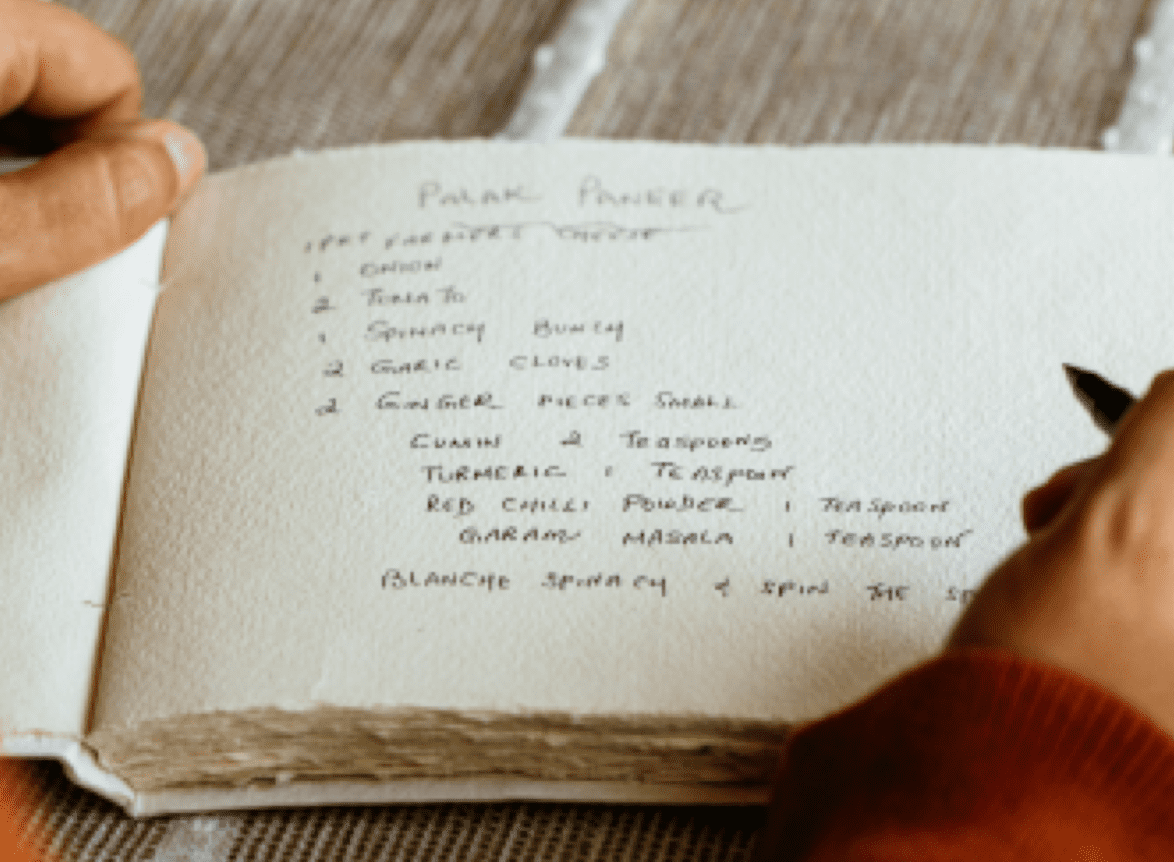Reviewing your recipes once you have uploaded them is a great way to ensure that you’ve captured the details and story accurately. Additionally, proofreading your recipes will also help you uncover any errors in spelling, style, and instruction prior to creating your eBook or printing your own cookbook.
TIP 1
Spell Check
This is an easy one and yet such a key part of creating a professional, quality cookbook. While we do offer the spell check feature in the recipe input section, it is always good practice to reread your entire cookbook to make sure dish names, people’s names, and ingredients are spelled correctly.
TIP 2
Tone and Style
We all have a specific writing style and tone. Whether you’re funny, sentimental, or lighthearted, keeping the same style throughout your recipes will make your cookbook consistent and easy to read.
For example, maybe you want to capture and share a lot of sentimental memories in your cookbook. In this case, use the same tone when writing about events, memories, and your recipe stories. You can then pull it together by showcasing old pictures and other sentimental mementos, like scanned handwritten notes, on our beautiful divider pages.
TIP 3
Abbreviations
People often use a lot of their own abbreviations in recipes. Ensuring consistency across recipes will be key, especially if you are copying notes that your grandma or mom wrote. If you use “tsp” for teaspoon and “tbsp” for tablespoon, then use these same abbreviations everywhere. Don’t interchange abbreviations.
If you’re creating a cookbook that will be shared with a broader audience, you’ll want to be very intentional about where and how you use abbreviations. We recommend adding a section in your Introduction chapter of your book that will explain the abbreviations you use throughout your cookbook. See our chart below for a list of common abbreviations.
TIP 4
Simplify
During your recipe review, keep an eye out for instances when you may have overcomplicated the instructions. Imagine a sentence which says ‘first steam the corn and then saute it until soft, after which, you’ll make fritters by deep frying them in hot oil for 3-4 minutes and then serve hot’? There’s a lot going on in that sentence.
Simplify your instructions by breaking sentences into shorter steps that focus on completing one action at a time. Breaking up instructions into simpler steps prevents reader confusion and makes it easier for readers to understand and follow your directions.
Ready to create your own custom cookbook? Shop now
Have more questions? Visit our FAQ section here. Alternatively, you can email us at hello@heirloomproject.co
To get regular updates, follow us on Instagram here




Leave a comment
Your email address will not be published. Required fields are marked *